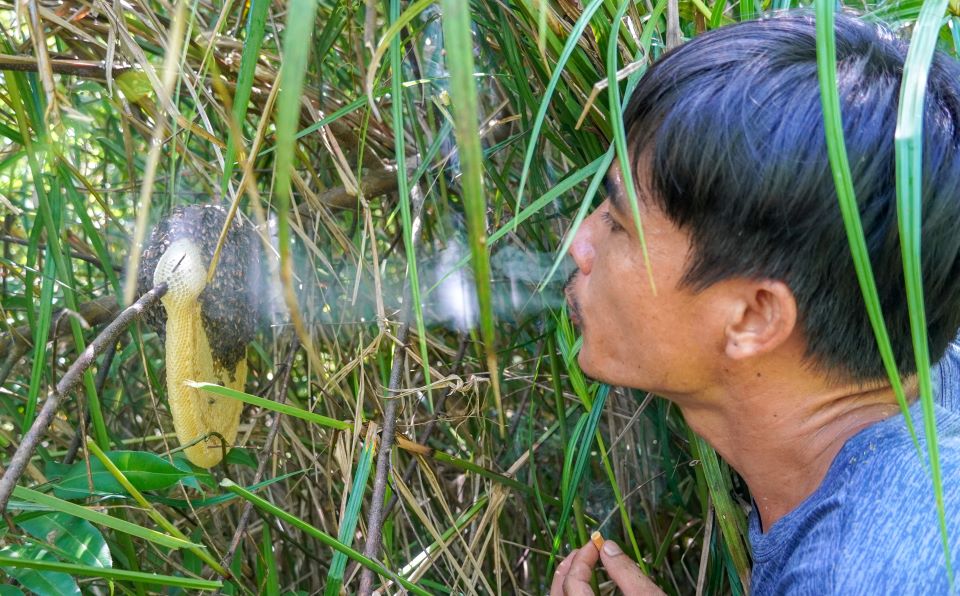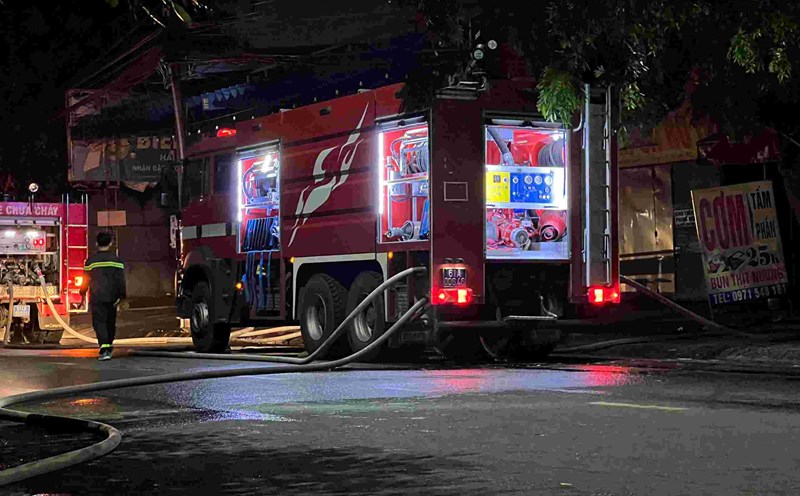Following the footsteps of bees in the cajuput forest
Following Mr. Huynh Thanh Phuong's group of beekepers in Ho Dac Kien commune (Chau Thanh district, Soc Trang province), we witnessed the arduous journey of searching and harvesting the nests of0 reptiles. To enter the forest, the group of workers had to move by boat through small canals. Thanks to their experience observing the flight path of bees, they quickly determined the location of the nest.
"The worms fly up and down a lot, but the nest is close. flying directly, flying slowly is looking for food. As for the displacement flights, the nest may have been taken by someone else," Mr. Phuong shared.
After clearing the forest dust and determining the nests at low altitudes, the group wore tight rubber protective gear from head to toe to avoid burning. "The tree is very fierce, if burned it can cause shock, endangering life, so it must be protected. And wearing this is as hot as being in a sauna," said Mr. Phuong.

The group's noise quickly attracted the attention of the bees, and they flew straight into the group. With quick operations, in less than 5 minutes, the group had harvested the beehive and withdrawn safely. When they were far from the danger zone, they dared to take off their protective gear, and everyone's face was covered with sweat.
"We absolutely do not use fire or smoke to avoid the risk of forest fires, especially in the dry season. small groups are left behind, only large groups are taken to maintain the bee source," said Mr. Phuong.
Mr. Phuong shared that the boter hunting season lasts from June to the end of the 12th lunar month. On average, each group collects 4-7 groups per day, each group weighs from 2-3kg, the larger group can reach 5kg.

In the group, there was also Ms. Nguyen Thi Nhanh - the only woman. Although not her main job, she often follows a group to the forest on weekends. "Living next to the forest since I was a child, seeing the brothers go fishing and I fell in love. At first, I could not stand the heat of wearing unused protective gear, and was once stung by a bee, but when I got more income, I was happy," she said with a smile.
Changing the wild honey hunting season
Mr. Nguyen Chi Thanh - a wild honey collector - said that from November to around the end of April, when the cajuput forest is in the flower season, the group switches to exploiting wild honey because this is the time for the best quality honey.
"The goose often makes nests on large trees with branches pointing at the crossroads and breaking the wind. Seeing the direction the bees are flying, we can predict the location of the nest," Mr. Thanh shared.

Mr. Thanh said that to get honey, the workers used nhang smoke to repel the bees from flying. The fly bees are gentle, when they encounter smoke, they fly, without much protection. However, for more aggressive honey bees, you need to wear gloves, a long-sleeved shirt and cover your face. In addition, workers must know how to leave their nests for the bees to continue to breed, protecting the honey source for a long time.
"The team built the team very quickly. After 20 days, they can produce honey, but to achieve high quality, it takes more than 30 days to wait. Understanding this law helps workers have a stable and sustainable honey crop," said Mr. Phuong.
The honey after harvest is hand-picked, filtered and bottled. The tea tree honey is light yellow, slightly fragrant, and sweet. The selling price ranges from 500,000 - 650,000 VND/liter, while more expensive fly honey can be up to 1 million VND/liter. For road bees, workers often separate their nests to sell as food, old bees use them to soak in wine, priced at about 300,000 VND/kg, bringing a significant source of income to rural people.
According to Mr. Thanh, in the dry season, groups of workers always raise awareness of forest fire prevention. "We don't use fire in the forest. Living by the forest, we have to protect the forest. If it burns, not only the bees will be lost, but the whole job will be lost," he said.









